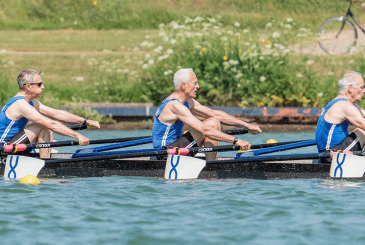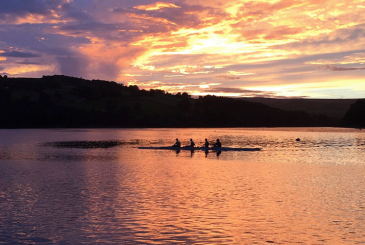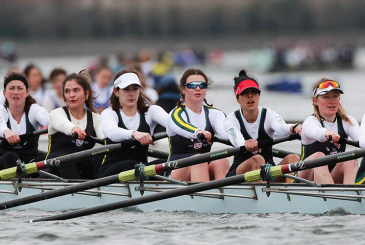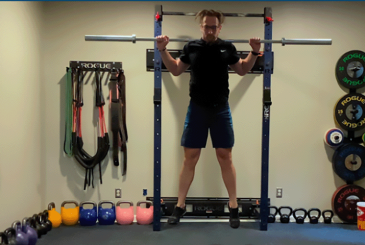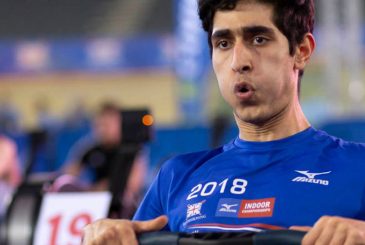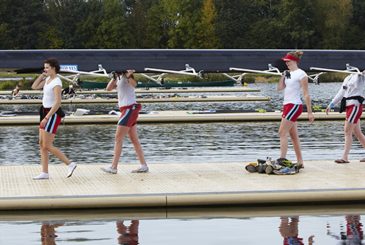Dr Mark Homer reviews the research
A bit of cold does not normally faze the rowing community. In fact, I would wager that it is only water’s inability to remain rowable below zero degrees centigrade that stops more of you braving even colder conditions in the winter months. But what are the physiological effects of rowing in Arctic-like surroundings and how do they differ from the cosiness of an indoor ergo? This article will explain how exercise in the cold affects the body and the potential implications for training and racing in such conditions.
Like any engine that produces power, the human body generates substantial heat as a by-product when breaking down food and converting it to chemical energy for rowing. To combat this rise, and retain an optimal internal environment, we have several mechanisms for heat loss. These come in particularly useful to avoid overheating in hot conditions, but are also important when trying to preserve heat. Convection (transferring heat by the motion of gas or liquid), conduction (transferring heat by touching solid material), radiation (transferring heat through infrared rays) and the main method – evaporation (sweating), where fluid is produced by sweat glands to deliver heat to the atmosphere all affect our internal temperature.
When we want to avoid losing heat because there is a danger of core temperature dropping below optimal range, the body limits the transfer of heat towards the skin by invoking peripheral vasoconstriction to minimise radiation, convection and evaporation. This involves the narrowing of blood vessels close to the skin, essentially keeping blood nearer to the warm core. If this is not enough, more extreme measures are employed. Non-shivering thermogenesis involves an increase in metabolism that leads to more heat production – the body’s equivalent of throwing another log on the fire. If things continue to get worse, shivering starts to passively increase heat production up to five-fold.
Generally, the heat produced during exercise is more than enough to ensure a stable core temperature. It is worth mentioning that body composition will have a fairly major effect on an individual’s ability to maintain body heat. Therefore, children and lightweights who tend to have low body fat and therefore, less insulation are at greater risk of cold injury.
“The risks of cold injury (hypothermia) are increased on long outings when kit is likely to be wet”
There are other factors that may be more threatening to performance on a cold morning that affect other physiological systems. Cold air normally means dry air, and our delicate airways prefer a warm and moist combination of gases – particularly when breathing rate and depth are increased during exercise. Cold air can potentially constrict the airways and lead to difficulties in breathing. This will be more prevalent in those who suffer from asthma, so taking your inhaler out with you in the cold is a good idea. Also, the recruitment of muscles for contraction can be affected by temperature – reducing force development and speeding up fatigue, stressing the need for a thorough warm-up.
So, what are the practicalities of these effects on rowing training and performance?
In terms of training, the risks of cold injury (hypothermia) are increased on long outings when kit is likely to be wet – massively increasing its thermal conductivity, and heat production is reduced due to fatigue and potentially inadequate fuelling. Having to slow down to make it home because you are tired will reduce the amount of heat produced, and potentially fail to match the heat being lost to the environment. Therefore, the advice is simple – take spare dry kit in case of splashing, fuel during the outing, and try to never be too far from home. If you are lean, then it is likely you will feel the effects of the cold before others, so take this into consideration when ‘layering up’.
“There is no such thing as bad weather, only unsuitable clothing”
Competition provides a different problem. The nature of head racing means there is an inevitable wait at the start while crews are released down the course. While cold injury is much less likely here, there is a performance implication of sitting still for more than five minutes. As discussed, warm muscles are powerful muscles, and maximum power is required not just to get the boat moving, but to maintain race pace through the middle and deliver a sprint finish.
A standard warm-up may not be sufficient to maintain body heat during this waiting period, so it is worth extending what you might normally do. Also, wear clothes that wick away moisture to avoid sitting still in wet kit as this will accelerate heat loss. Keep any extra layers on right until the last minute – including hats and gloves as considerable heat can be lost from the head and extremities. When sitting in a freezing launch, one of the GB coaches once told me: “there is no such thing as bad weather, only unsuitable clothing”. A rule worth remembering when you hit the water this winter.
Photo: Andrew Price





